The power of a viral loop is undeniable for any marketer looking to grow brand awareness and generate more leads. In this blog post, we’ll dive into the basics of what a viral loop is, how it can benefit your business, and show you two effective methods for creating a viral loop in your own business.
Get ready to turn your customers into advocates 📣🙋

What is a Viral Loop?
A viral loop is a marketing strategy that uses the power of human sharing to increase brand awareness and drive customer acquisition. Essentially, it’s a cycle where customers use your product or service, share it with their network, and in turn bring in new customers who repeat the process. By leveraging this powerful word of mouth technique, businesses can accelerate their growth and build solid foundations with their customers.
One advantage of using a viral loop is that it allows you to tap into existing networks of users who are already interested in your product or service. These people are most likely to have friends and family that could be interested in your business too.
You can ask people to refer friends to make a purchase from your business, refer friends to read your newsletters, or even refer friends to download your app. Each time this happens you’re successfully creating a viral loop in your customer journey. Well done 👏
Think about it.
When choosing insurance, would you trust a friend’s recommendation or an ad?
When choosing an online course, would you trust a friend’s recommendation or an ad?
When choosing a tax adviser, would you trust a friend’s recommendation or an ad?
When choosing an investment, would you trust a friend’s recommendation or an ad?
When choosing an NFT, would you trust a friend’s recommendation or an ad?
When choosing a contractor, would you trust a friend’s recommendation or an ad?
When choosing a coach, would you trust a friend’s recommendation or an ad?
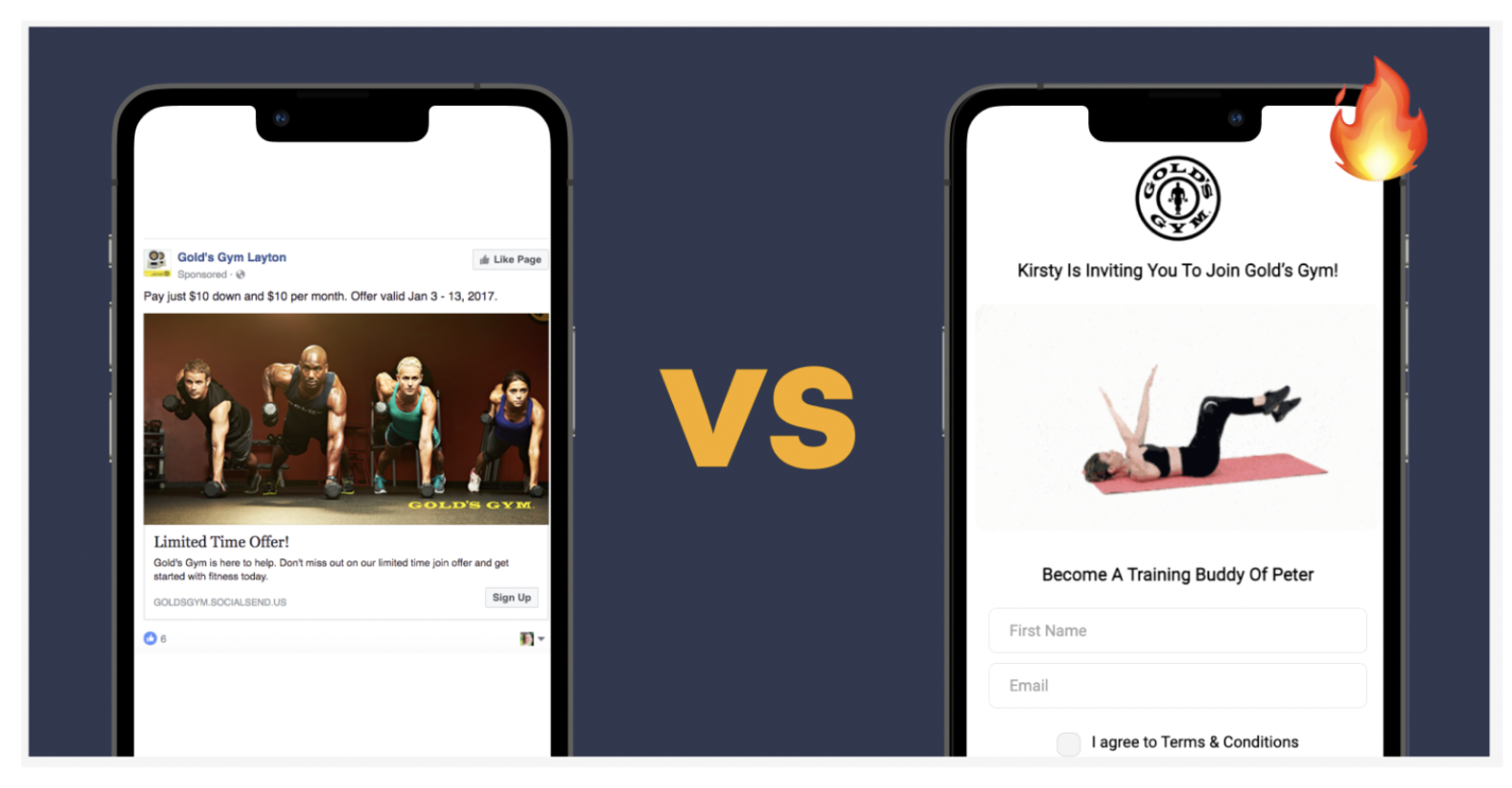
By engineering viral loops into your business, you can encourage your customers to spread the word about your products and service. Ultimately tuning one customer touch point into two, or three, or four.
What’s The Formal Definition Of A Viral Loop?
The formal definition: marketing strategy that involves customers spreading the word about a brand or product to others, creating a self-sustaining cycle of growth. This cycle is fuelled by incentives for sharing or referring (e.g. discounts, exclusive content, vouchers) and ease-of-use (e.g. referral links, share buttons).
Real Life Viral Loop Examples
Case studies of successful viral loops used by brands can help marketers understand the mechanics that drive human sharing. By studying past examples of loops in marketing, you’ll see how powerful a viral loop can be if executed correctly.
Let’s start with the Dropbox example.
Dropbox grew rapidly through a referral program that rewarded users with an additional 1GB of storage space for each new person they referred. All you had to do is introduce a friend to Dropbox, and if they signed up and used the free space you gave them, you’d get 1GB for free too.
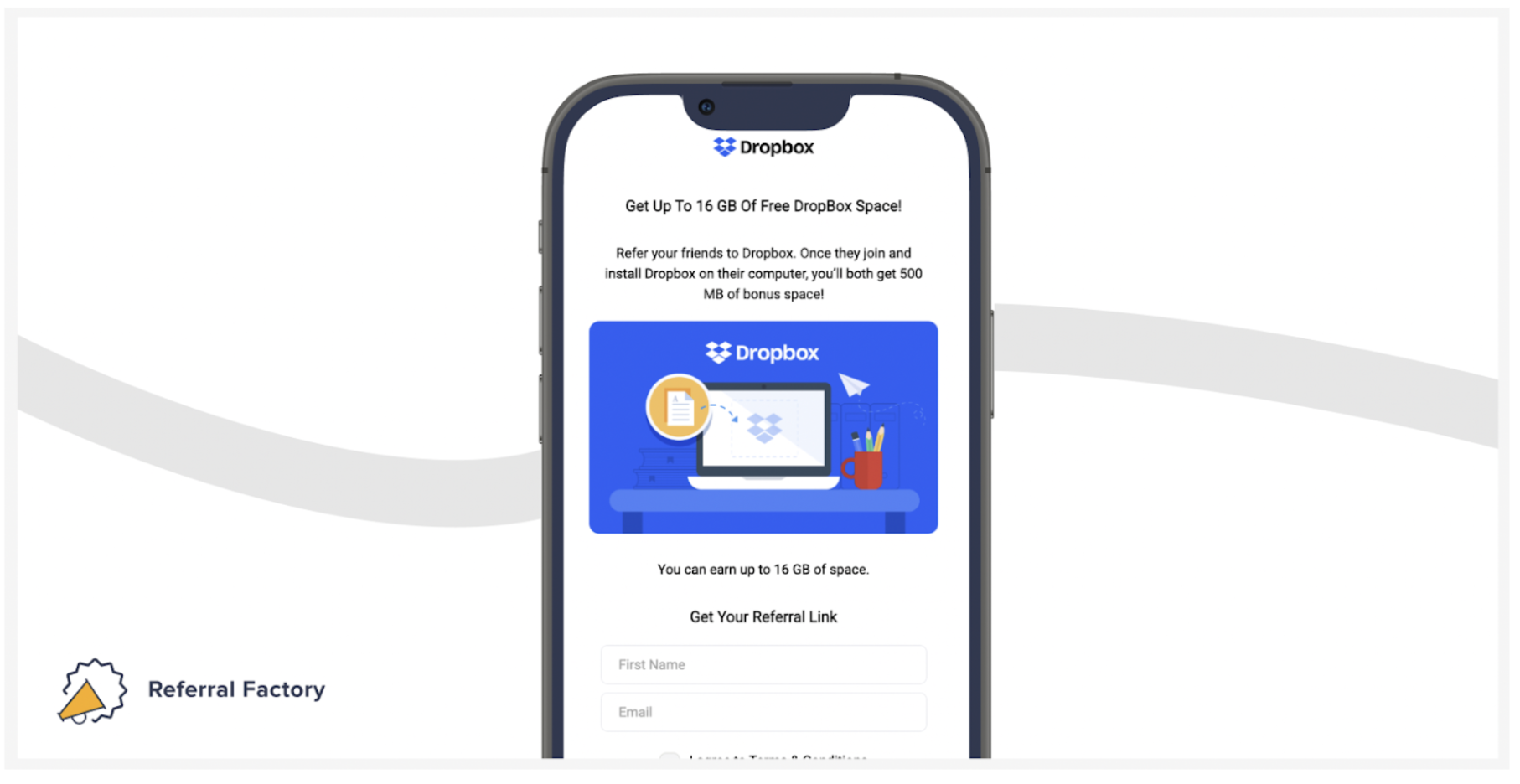
This viral loop turned new Dropbox customers into brand ambassadors, that in turn, brought in more customers. And the loop continued. Dropbox saw 3900% growth in 15 months, which means they were essentially doubling their user base every three months.
And one of my favorites. Share A Coke.
The “Share A Coke” advertising campaign over a decade ago was a massive success. By replacing the Coca-Cola logo on their bottles with popular (commonly used) names, they encouraged people to share their love of Coca-Cola with friends and family. The campaign generated online buzz and real world excitement, prompting people to actively search for Coke bottles with their friends’ names. People were sharing their Coke bottles with friends in real life, and tagging their friends online with an image of a Coke with their name on it.
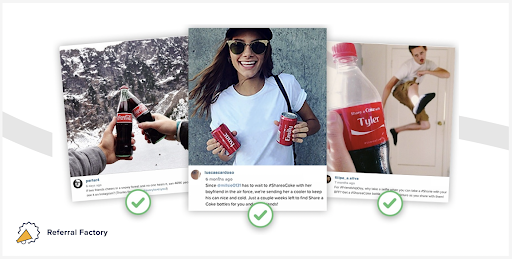
The result was a significant increase in sales volume for Coca-Cola during the campaign period. The return on investment (ROI) achieved by the “Share a Coke” campaign was impressive, with notable sales growth reported.
Radius Fuel Cards
A give and get that took the UK by storm. In times of economic recession, people need basics more than luxuries. This is why Radius used a viral loop that would encourage ever customer that got a fuel card, to refer a friend. If you refer a friend you get £50 of fuel for free! Your friend gets £50 of fuel too. It’s a total win win all round!
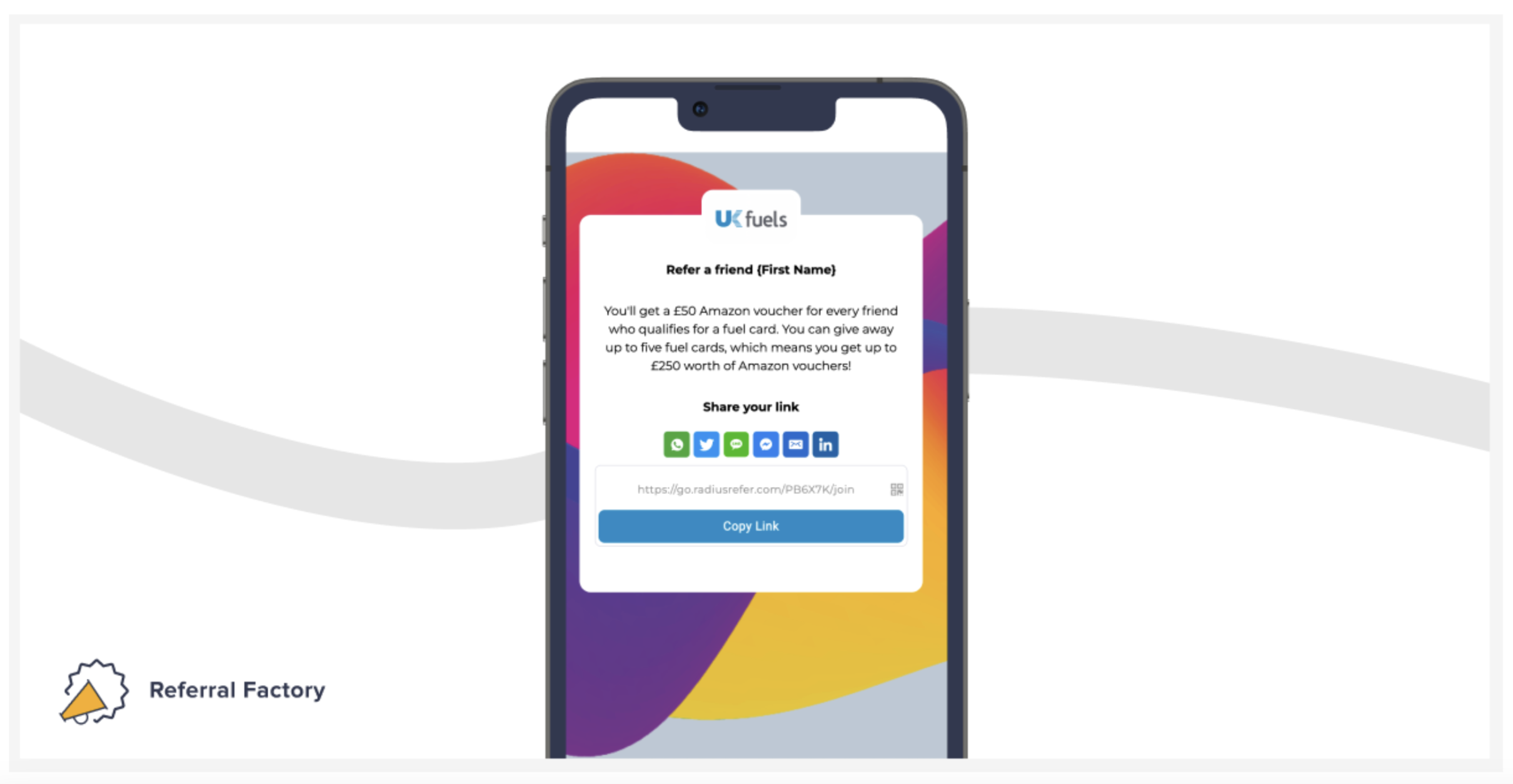
Ourbus referral program (travel industry)
A classic loop added to the user’s journey. Once you book a trip with OurBus, you can invite a friend to join and you’ll both earn $15! We all know that people are addicted to sharing their love of travel, and this referral program was the perfect loop to add into the OurBus marketing strategy.
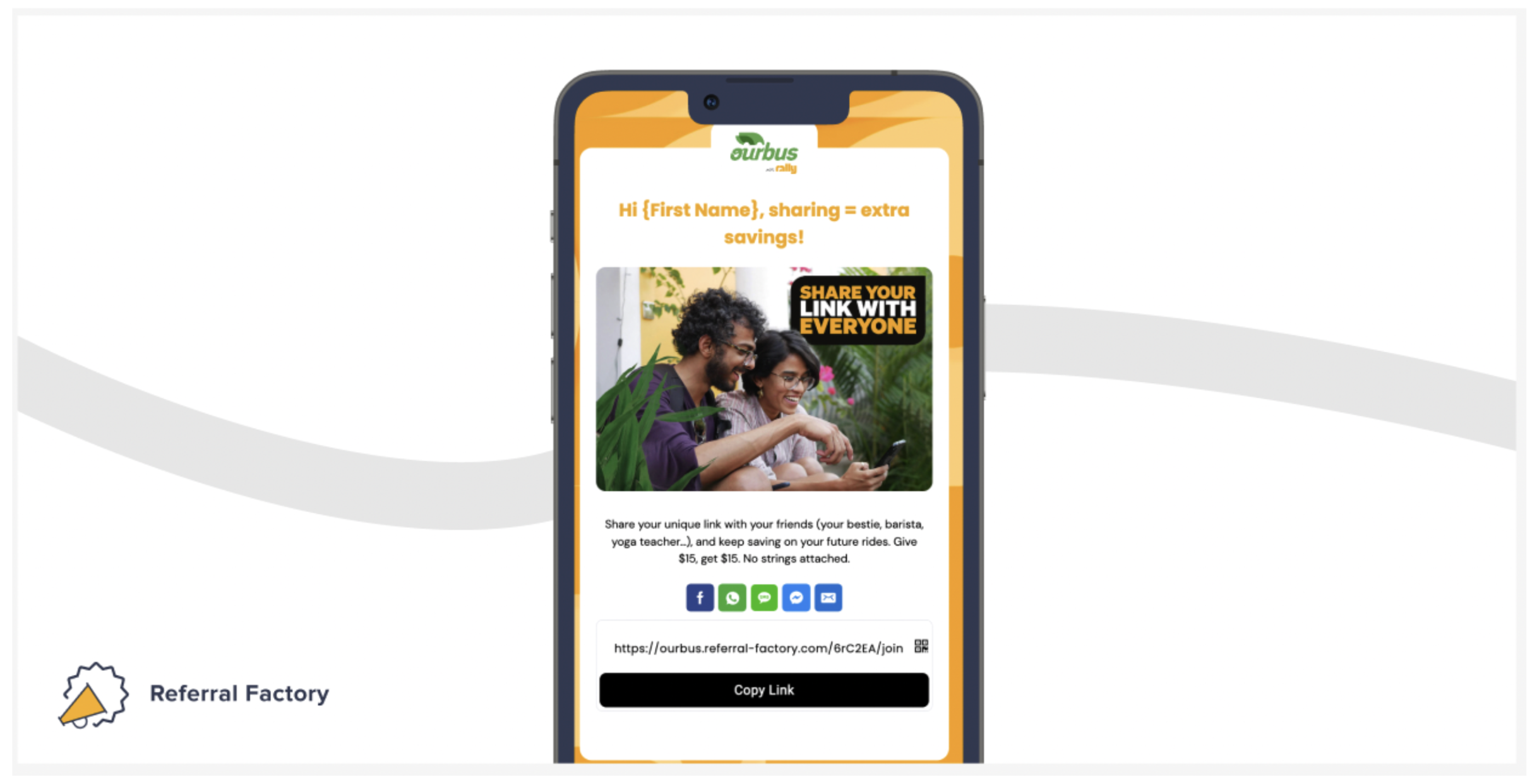
There are different types of viral loops, such as incentivized sharing to drive social proof. This is when your customers intentionally share your content and with their friends, showing proof that they trust your brand as the best option in your industry.
Another type of viral loop is incentivised referrals (often called referral marketing). This is where you prompt your customers to refer their friends to your business, in exchange for rewards like vouchers or discounts. This type of viral loop is one of the fastest growing trends in marketing, because it allows you to grow your customer base while rewarding them at the same time. It’s a win-win situation!
How A Viral Loop Can Help You Grow
A viral loop is a process by which customers refer others to your product or service. They could refer their friends to watch your latest YouTube video, refer their friends to register for an event you’re hosting, or even refer their friends to try your product or services.
This sharing acts as a personal endorsement for your brand, and it’s a great way to build awareness and authority within a circle of people. This is the exact foundation you need to drive growth. Get your customers to actively share your content with friends on Facebook, Twitter or Whats App – this will build trust with the right audience. Then get your customers to promote your product or service to their friends, this will drive actual growth.
But that’s not all.
A viral loop will compound after time too.
The best thing about acquiring new customers that have been referred through a viral loop, is that these are the people most likely to also refer you to another friend. Because they already know how the process works. This creates loop after loop after loop, and increases your viral coefficient over time.
It’s important to remember that when asking your customers to close the loop, and refer you to their friends, you’ll need to offer a reward in exchange for this favour. To expect this level of engagement from your customers for free would be unfair, so make sure you offer your customers money, vouchers, discounts, advantages, or any other reward to motivate their behavior.
By leveraging this natural word-of-mouth marketing, you can increase brand awareness and generate leads at a lower cost than traditional advertising methods. This viral loop style marketing will set you up for long term, sustainable growth.
Here are some of the direct benefits:
Increased Brand Awareness

Social media is a powerful tool for increasing brand awareness through social sharing of your brand message. By creating shareable content, you are encouraging users to spread the word about your brand and reach a wider audience. User-generated content featuring your brand also has a significant impact on increasing brand visibility as it provides authentic recommendations from satisfied customers.
Incentivizing users to share with friends can be an effective way to leverage the power of viral loops and increase brand awareness. By offering rewards such as discounts or exclusive access, you encourage existing customers to refer new ones, expanding your customer base and boosting sales in the process. This strategy not only increases referral rates but also creates loyal customers who become advocates for your brand – driving long-term growth through their ongoing support and positive word-of-mouth recommendations.
Referrals

Offering rewards or discounts for referrals is a powerful way to incentivize customers to share your product with their network. By providing an added benefit, you create an extra level of motivation that can turn satisfied customers into enthusiastic advocates. Additionally, creating a sense of exclusivity through referral programs can make participants feel like they are part of an exclusive community and further motivate them to refer their peers.
Providing tools and resources for easy referral sharing makes it simple for your customers to spread the word about your product. By offering pre-written social media posts or email templates, you remove any barriers that may prevent someone from making a referral. This ease-of-use not only increases the likelihood of someone referring others but also ensures consistency in messaging across all shared content.
Improve Conversion Rates

Leveraging social proof from user-generated content can be a powerful tool to improve conversion rates. By showcasing positive reviews, testimonials and real-life examples of customers using your product or service, potential customers are more likely to trust and ultimately convert.
Other effective strategies include implementing “Freemium” models that encourage users to upgrade for additional features and offering “Share-to-unlock” promotions that incentivize shares to access exclusive offers. These tactics not only drive conversions but also increase brand awareness through organic social sharing.
- Utilize user-generated content as social proof
- Implement “Freemium” models that incentivize upgrades
- Offer Share-to-unlock promotions for exclusive offers
Decrease Cost Per Acquisition

Increasing organic reach through social sharing is a cost-effective way to decrease the cost per acquisition. By creating shareable and engaging content, brands can encourage their followers to spread their message on social media platforms, which can help increase brand awareness and attract new leads at no additional cost.
Reducing the need for paid advertising by using word-of-mouth marketing can also be an effective strategy to lower the cost per acquisition. By incentivizing existing customers through discounts or rewards, marketers can encourage them to refer their friends and family members, who are more likely to convert as they already trust the recommendation from someone they know.
Incentivizing existing customers to refer new leads at a lower cost than acquiring them traditionally is another way of reducing the overall cost per acquisition. Offering incentives like exclusive access or free trials in exchange for referrals not only helps reduce costs but also strengthens customer loyalty and increases engagement with your target audience.
More Leads Generated

One effective way to generate more leads is through “Refer-a-friend” campaigns. In this type of campaign, both the referrer and their friend receive benefits upon successful referrals. By offering incentives for referrals, it encourages people to spread the word about your brand and bring in new potential customers.
Another strategy for generating leads is through challenges or experiences that require participants to invite others along as well. This creates a viral loop where each person brings in more potential leads and expands your audience reach. One example could be hosting an online challenge or contest with bonus entries for every additional person someone invites to join.
Creating UGC-based quizzes can also lead to increased lead generation as people want their friends and family members to participate too. By allowing users to create questions, it adds a personal touch that makes participants feel invested in the experience while simultaneously encouraging them to share it with others who may be interested.
Tools You Can Use To Create A Referral Loop
Below we’ve listed a comparison of the best referral software on the market right now, including their pricing ranges and review scores on Capterra and G2. The referral software comparison below is by their average reviews scores, showing which tools are most loved by real customers 👇
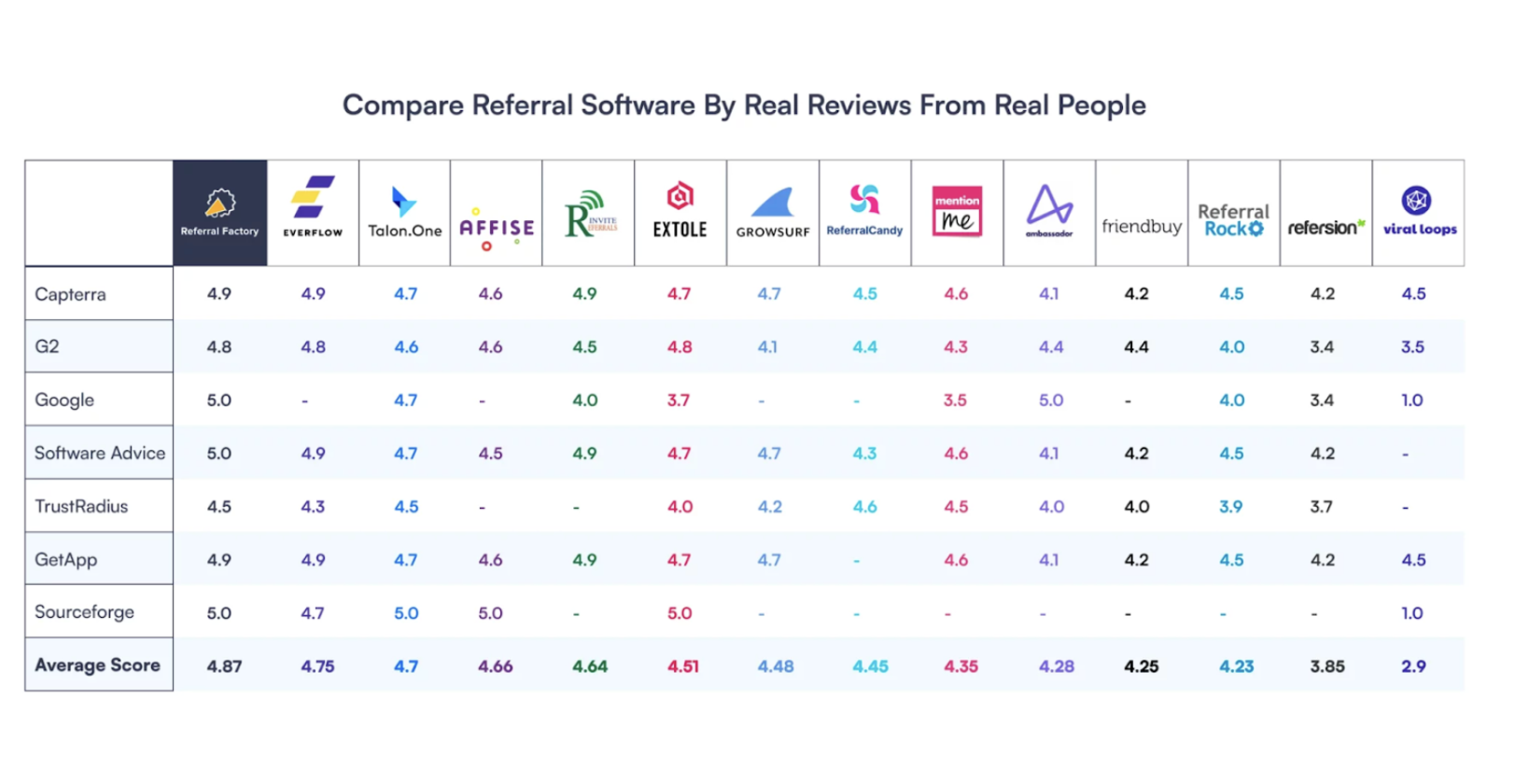
How to Create a Referral Loop (to get referrals)

To create a viral loop that drives referral and revenue, you can offer your customers incentives to refer their friends (personal or business). One way to do this is by offering rewards for referrals, such as discounts or free products/services. Another effective strategy is gamification – turning the referral process into a game with points and prizes. Whichever method you choose, make sure it’s easy for customers to participate and share with their network.
Once you’ve launched your referral program, track its success using data analysis tools like Google Analytics or software specifically designed for measuring viral loops. This will help you identify which incentives are most effective in driving referrals and optimize your program accordingly. Remember: the key to creating a successful viral loop is constant testing and improvement based on real-world results.
Collect All Your Contacts Into A CRM / Database / List
Importing all your contacts into a CRM (Customer Relationship Management) software, database, or list is an essential step in building a successful viral loop. By collecting and organizing your contacts in one place, you can easily manage and track their engagement with your brand. Here are some tips to help you get started:
- Import contacts from various sources such as your website, email campaigns, and social media platforms.
- Segment your contacts based on their interests and behavior to personalize communication efforts.
- Regularly clean up your database by removing inactive or irrelevant contacts to maintain its accuracy.
By following these steps, you can ensure that all of the individuals who participate in your viral loop are accounted for and engaged properly. This will ultimately lead to higher conversion rates and increased customer loyalty.
Email Them An Invite To Join Your Referral Program
Craft a subject line that stands out from the clutter and entices recipients to open your email. Use power words, such as “exclusive” or “limited time offer,” to create a sense of urgency. For example, you could use something like: “Get rewarded for sharing our brand with friends.” This grabs attention and clearly communicates the value proposition.
In the body of the email, explain in clear terms how joining your referral program can benefit them and their friends. Highlight any incentives they will receive by participating in your program and make sure it is easy for them to understand what they need to do next. Include a prominent call-to-action button that leads directly to a dedicated landing page where they can sign up easily without any confusion or distractions. By following these simple guidelines, you’ll be able to encourage more people to join your viral loop referral program!
Ask Them To Refer Friends
Provide customers with an easy-to-use referral form or link that they can share via email or social media. Making the referral process as simple and convenient as possible increases the chances of success.
Encourage customers to share their personal experience with your brand as part of the referral message. This helps build trust and credibility, making it more likely for their friends to take action.
Offer incentives for successful referrals such as discounts, credits, exclusive content, etc. This gives customers a reason to refer others and can help increase participation in your viral loop program.
Remember that word-of-mouth marketing is one of the most powerful ways to grow your business. By implementing these strategies into your referral program, you will be able to effectively turn customers into advocates who will spread the word about your brand and help you achieve greater success through a viral loop!
Track and Analyze Results
To truly harness the power of a viral loop, it’s important to track and analyze the results generated by your referral program. Gathering data on referrals generated by each contact over time can help you identify trends and patterns in customer behavior. Analyzing which channels have been most effective at driving referrals allows you to focus your efforts on the strategies that are producing the best results.
In addition, A/B testing different elements of your referral program – such as incentive levels or messaging – can help you optimize its performance. By constantly refining and improving your approach, you can ensure that your viral loop is generating maximum value for both you and your customers.
How to Create a Share Loop (to get shares)

To create a viral loop that drives shares and awareness, you need to identify your best customer segment first. This will help you tailor the content to their interests and preferences, ensuring it resonates with them and encourages sharing. Once you’ve identified your target audience, create engaging content that is shareable and adds value to their lives. Make sure it’s easy for them to share by including social sharing buttons or encouraging them with a call-to-action.
The next step in creating a viral loop is asking customers to share the content with their networks. Encourage word-of-mouth marketing by adding incentives like discounts or rewards for referrals. Lastly, track and analyze results using data analytics tools like Google Analytics or social media insights. Use this information to optimize future campaigns and improve engagement levels overall.
Identify Your Best Customer Segment
Conducting market research is critical in identifying your best customer segment. By analyzing audience demographics and behavior, you can uncover valuable insights that inform your marketing strategy. In addition to research, analyzing customer data can identify high-value segments with a propensity for sharing your content. Once these segments are identified, it’s imperative to segment email lists and tailor messaging and content specific to each group. Personalization breeds engagement, which ultimately leads to increased brand awareness, lead generation, and conversions through the viral loop.
Create Engaging Content
To create engaging content, use storytelling techniques that evoke emotions and resonate with users’ values. People are more likely to engage with content that they can connect with emotionally or aligns with their beliefs. Leveraging visual media like images, videos, or infographics can also enhance engagement by making the content more visually appealing and shareable.
Another effective way to create engaging content is by focusing on providing value through educational resources, incentives or exclusive deals. By offering something of value to your audience, you increase the likelihood of them sharing your content within their network and creating a viral loop effect.
Remember that creating engaging content is not just about being entertaining but rather providing value in a way that makes it easy for people to share it within their networks. With these tips in mind, marketers can create highly effective campaigns using the power of the viral loop.
Ask Them To Share It
To unleash the power of the viral loop, you need to ask your customers to share your content with their networks. One way to do this is by including social media share buttons in emails, blog posts or website pages. By making it easy for them to spread the word, you increase the chances of your message going viral.
Another strategy is offering referral rewards such as discounts, freebies or early access to new products/services. This not only incentivizes sharing but also helps build customer loyalty and trust.
Lastly, encourage user-generated content creation by running contests around shared themes. This not only increases engagement but also generates valuable social proof that can help attract more customers into your brand’s ecosystem.
Track and Analyze Results
To measure the success of your viral loop campaign, it’s crucial to set up tracking tools like Google Analytics or Mixpanel. These platforms can help you monitor important metrics such as shares and clicks. A/B testing different variations of viral loop elements, such as messaging copy, is also a useful method for identifying what works best with your audience. Additionally, incorporating feedback mechanisms like surveys or interviews into the analysis process can provide valuable insights for improving future campaigns. By consistently tracking and analyzing results in these ways, you’ll be able to optimize your viral loop strategy over time for better brand awareness, lead generation, and conversions.
Conclusion
Creating an effective viral loop – to drive shares or referrals – requires a strategic approach that takes into account both the customer experience and the mechanics of virality. To achieve this, you need to focus on developing incentives that encourage users not only to engage with your brand but also to invite others into the funnel. Additionally, incorporating social proof elements such as testimonials or influencer endorsements can help build trust among potential advocates.
Closing Tip
Measuring and tracking the success of your viral loop campaign is critical in determining its impact on brand awareness, referral lead generation, and tracking which referrals convert into actual paying customers.
Tools such as Google Analytics or social media analytics platforms provide insights into the shares and engagement rates of people, that are going through your share loop. If you’re looking to create a referral loop, then you’ll need tools to track your referrals like Referral Factory, Ambassador, or Buyapowa.
Tracking viral loops effectively enables marketers to make data-driven decisions concerning their campaigns’ effectiveness and ROI. Viral loops are just like any other marketing channel you’ve tried – they improve over time as you optimize based on learnings. So make sure your tracking is all set up before you launch!
You may be interested in: How Do You Create a Viral Video?

